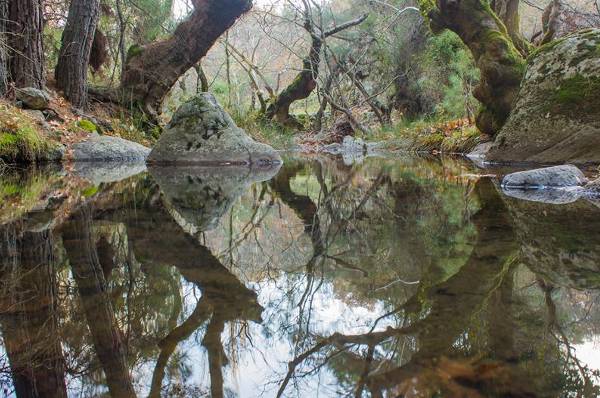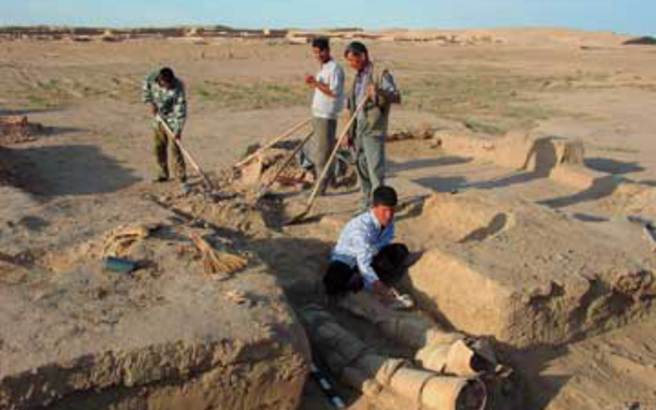
The populations of the Lower Paleolithic Age “walked” through Aegean to reach Lesvos on their migration routes, which was the Garden of Eden land that helped survival
These populations simply passed Aegean on foot, transferring cultural and technological achievements of their era “say Nena Galanidis, Associate Professor of Prehistoric Archaeology at the University of Crete who has led the special archaeological research on Lesvos based on excavations that find today their epicenter at Lisvory, Lesvos area, near Kalloni gulf .
Lesvos, a land passage
Lesvos, a big rich island today with incredible natural resources, had been an ideal destination, a garden of Eden, at the prehistoric times , and had served deep back in history as the migration passage for the populations of that time, the flows people of the lower Paleolithic era migrating during the glacier times in order to survive. And we don’t even know how much of “humans” that population had been
“Before 500,000 years, we have to imagine that this island used to join with Western Asia, and then to rule again. Today we all know Lesvos as an island, but had not always been island throughout the hundreds thousand years of its history.
During the glacial periods of times, the sea level fell, while the ocean water was “locked” in the glaciers due to drought and cold, the sea level fell, and a decline of about 60 meters was enough to unite Lesvos (and most of the islands of the Eastern Aegean) with West Asia, adds professor Nena Galanidou.
Putting them together, we can see today that all of what we know as island group of East Aegean Sea, was the land end of Anatolia.
Such geophysical conditions were allowing the animal populations to be displaced, as well as the populations of progenitor species of the modern man, called hominids. “.

The Paleolithic Findings, tools made of Lesvos rocks
The findings are mainly stone tools of the almond season, and large cutting tools, something like primitive cleavers. All are made exclusively from local rocks.
The paleolithic man who was active at the time, mainloy hunters and gatherers, had not yet learned any time of farming, to cultivate the land, therefore he was moving very often in areas where there was plenty of food.
Why did they stop in Lesvos?
“How and Why their archaeological imprint is visible to us today?, the archaeologist and excavatoror Nena Galanidou explains
The most probable explanation to me is that Lesvos has been the main stop during the hominids’ migration journey, because they found there prey, to feed themselves durin that jouney, and this happened on the shores of a large lake , Kalloni, the Beauty Golf of the island as it is known today. Also, they found the material to build their tools, in this place, but as well they find a point which can be for them very welcoming: the hot springs
Around the hot springs we find today a micro-environment that was created. It is no coincidence that Rodafnidia are located right next to the hot springs of Ai Yianni of Lisvori which is the only point with springs in Kalloni ( Beauty) Gulf. ”

Lesvos , an Edem Garden
Lesvos during that time was a real paradise, as, indeed, it still is today, but far more blooming and wild. The seasons between the glaciers, sea levels were significantly falling, and the bed was beconing a huge land. People and animals of that time, were easily moving on foot from Asia Minor to the island, a place disposable of large food reserves.
It is no coincidence that paleontological objects of the findings have been discovered at the area close to the Gulf of Kalloni, were Aristolis of Ancient Greece discoverd Biology, 2500 years before, but hundreds thousands years after the homisids had chose it .
Today the are is a remarkable and perfect ecosystem, a birdwatchers’ destination, and the Gulf itself becomes each year the source of the best omega 3 food in the world, sardines of Kalloni.
At the prehistoric times Kalloni Gulf was hosting a huge collection of birds, animals and plants, the findings reveal.
Close is the Polychitos area, Vrisa also, were the Museum of Natural History is based hosting many of Paleolithic findings.

Go our Special Page on greek2m.org

You must be logged in to post a comment.